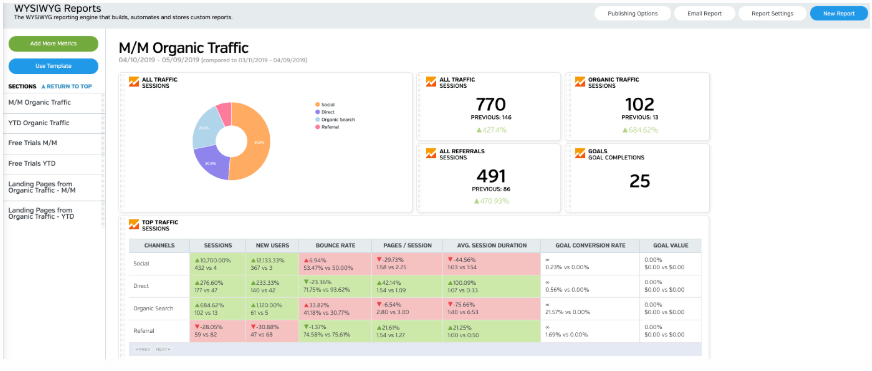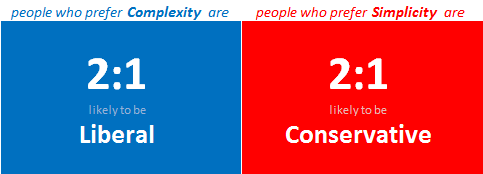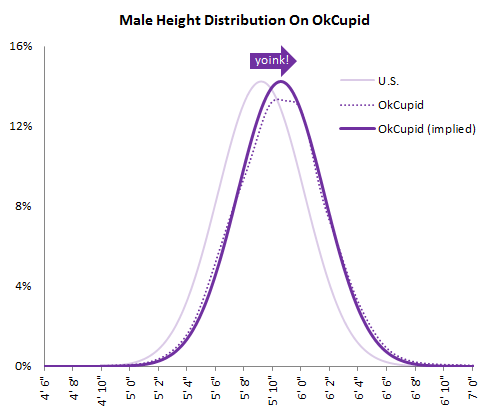Imagine a company blog that posts huge piles of data, insults its readers liberally and peppers in a few F-bombs to boot.
A recipe for disaster? You’d sure think so, but the content marketing strategy of OK Cupid has won the free dating website near universal praise.
Through its over-the-top blog posts, the site went from surviving on a nearly nonexistant marketing budget to a user base of over 3.5 million users and a $50 million acquisition by another online dating giant, Match.com.
Though I’ve never used OkCupid, its blog – blending humor and statistics with huge huge viral appeal – is a must-read in my RSS reader.
Here are five lessons any marketer can learn from OkCupid’s content and apply to your brand’s content marketing strategy.
1. Put your data to work
Most of OkCupid’s blog posts are data-driven, backed up by numbers from their own base of users.
In The Best Questions for a First Date, OkCupid helps daters out with a list of innocuous questions you can ask that will lead you to the answer of the questions you really want to ask.
For example, if you want to find out if your date is a liberal or a conservative, ask “Do you prefer the people in your life to be simple or complex?” According to the user data at OkCupid, liberals prefer complexity while conservatives are much more likely to prefer simplicity.
The takeaway: Use data you’ve collected about your business, customers or niche to craft content that will interest your average customer. If you don’t have data on hand or don’t feel comfortable using customer data, commission a survey or study or administer quizzes and polls through social media. Most industries won’t have data that’s as “sexy” as OkCupid’s, but you can still work with what you have to answer questions or provide a helpful resource.
2. Think big picture(s)
The key to creating data-driven content is to use statistics in a way that makes them jump off the page. OkCupid stands out from the crowd by using photos and graphs to explain their points in a clear and concise manner.
The graphs in particular are key, because they take otherwise boring numbers and give them visual appeal. This chart, for example, shows how men lie about their height on OkCupid to the tune of about 2 inches on average.
When your posts are primarily data, it’s imperative to find a way to display the data in a way that keeps the reader … well … reading.
This isn’t an easy feat – comments from OkCupid’s founder on this Quora thread show how much work goes into each post.
It’s easy to look at an OkTrends post, with all its simple graphs and casual writing style and think someone just threw it together, but it probably had 50 serious revisions.
The takeaway: Stats are great, but they’ll put the average person to sleep if they aren’t used correctly. When you use data, take the time to make sure you fully understand it and help your readers do the same with your visualizations.
And as the internet becomes more and more visual (witness the popularity of Pinterest and infographics), think visual in all your content. Develop a visual content strategy to take advantage of this shift.
3. Be less boring
Let’s look at the OkCupid post Death, Freedom and Cold Winters as a great example of avoiding the ordinary.
This post offers state-by-state answers to taboo questions including “If you knew for sure you would not get caught, would you commit murder for any reason?”
It’s risky, but that’s exactly why it works. The edginess of the content is what makes the post interesting enough to warrant attention and pique the curiosity of the reader.
The takeaway: Take risks with your content to avoid the trap of falling into the “just another blog” category. The most memorable sites are those producing content that is unlike anyone else’s.
Got corporate overlords who aren’t keen on risks? Get buy-in to try a slightly off-kilter concept, then measure the results. If it brings you more traffic and conversions, you’ll be able to argue for more out-there content.
4. Have a brand voice
Can you imagine typing this – about your own customers – on your company blog?
“The basic currency of the Internet is human ignorance, and, frankly, our database holds a strong cash position!”
Or this, from the “Death, Freedom and Cold Winters” post referenced above:
“Despite the fact that it’s located in Minnesota, Minnesota actually seems like a nice place to live… On the other hand, North Dakotans are strange: they’re apparently more for the equality of life, but also more for killing. These men are nihilists.”
Though the author ran the risk of alienating users in both states, he went for the joke anyway. Love it or hate it, OkCupid’s blog has a recognizable voice – one that includes plenty of snarky humor and salty language.
Will that approach work for most brands? Probably not. Humor is a great way to give content a voice, but it certainly isn’t the only way. Your brand’s voice can be quirky, helpful, conversational, etc. Your job as a content producer is to find a way to make your writing recognizable to anyone who reads.
The takeaway: Just because you have a boring business doesn’t mean you have to produce dry content. The best content online isn’t written like reference material. Show people that you’re more than just someone who punches keys on a keyboard by giving your content a consistent voice and personality.
5. Don’t go with the flow
OkCupid certainly wasn’t the first dating site on the block. What if the site had taken its cues from an “established” dating site like eHarmony?
One of eHarmony’s latest posts, Dating Do: Eye Contact, is not only boring but condescending. (Who on earth thinks looking at the floor while talking to a date will win any brownie points?) Although it uses data (from scientific studies, not user profiles), the information doesn’t tell us about ourselves or say anything new. It misses the gotta-share-it nerve that OkCupid’s posts strike.
The moral? Even though eHarmony might look more professional and boasts lots of posts written by people with “doctor” in the title, it can’t compete with OkCupid’s irresistible data-driven content.
The takeaway: Jeff Bezos and Amazon didn’t become icons by following the same business plan as the Wal-Marts of the world. Do something different. Get your brand outside the status quo. Own your niche by being the one that others strive to follow.

White Labeled and Branded Reports. Drag and Drop Editor. Automate your SEO, PPC, Social, Email, and Call Tracking Reporting.







All great except OK Cupid has posted fresh content since April 19th, 2011.
Wow, that’s crazy. Do you know why? This was the best I could find: http://www.quora.com/OkCupid/OkTrends-hasnt-had-a-post-since-over-a-year-have-their-math-geeks-left-the-building I guess their philosophy is it’s better to not publish at all than publish stuff that isn’t great,
Maybe it has something to do with Match acquiring them? I definitely don’t think they are not publishing because they can’t create quality content. Unless the lost some really good producers.
Yeah, that thread from Quora says their main writer is now writing a book and is also in the band Bishop Allen. Had no idea!